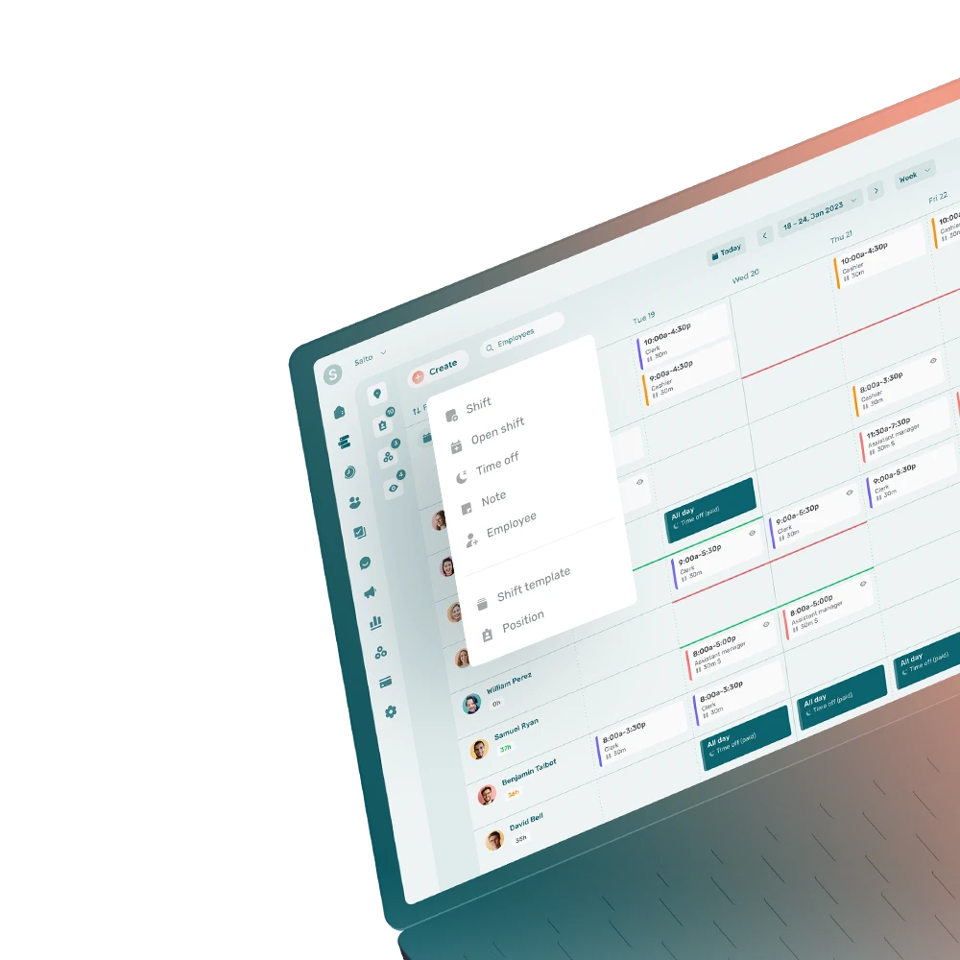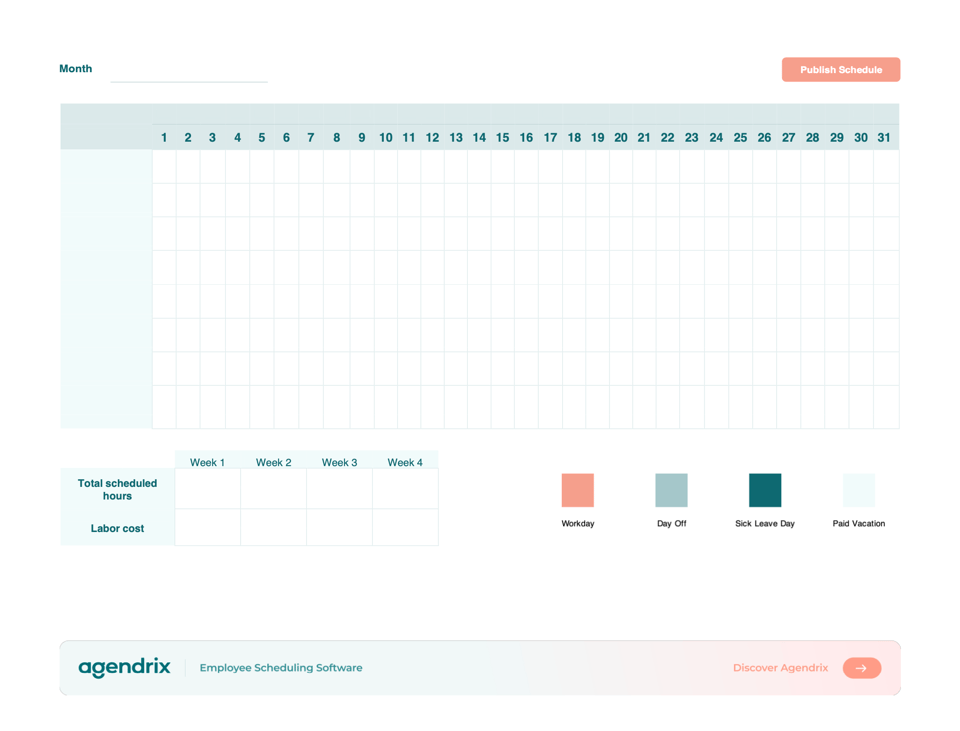Employee Monthly Work Schedule Template
This free employee monthly schedule maker lets you build your schedules while getting an overview of your employees’ shifts and positions, over a full month. Download this template for free in one of the following formats: Excel, Word, or printable PDF.

To which address should we send your resource?
What Is an Employee Monthly Work Schedule for Shift Work?
An employee monthly work schedule is a type of employee work schedule built over a full month.
Creating a monthly schedule is especially useful for quickly checking if shifts are evenly distributed among employees. It also provides a clear, at-a-glance overview, making it particularly practical for small businesses seeking efficiency and clarity.
The employee monthly work schedule must be drawn up each month.
How to Create an Employee Monthly Work Schedule?
To be well structured, a monthly work schedule must include at least the following elements:
- Dates
- Days of the week
- Month
- Employees’ first and last names
- Employees’ positions
- Employees’ shifts
- Paid breaks
- Unpaid breaks
- Total weekly hours
- Total monthly hours
- Labor costs
- Statutory or public holidays
What Are the Advantages of Using an Employee Monthly Work Schedule?
There are a number of advantages to using an employee monthly work schedule. Here are just a few examples:
- The manager only has to create a single schedule per month
- Employees can better organize their free time by knowing their schedule several weeks in advance
- The schedule can be built solely using recurrences, making it easy to create
- The monthly schedule contributes to a smoothly functioning work organization
- A clearer view of shift distribution among employees
- More information accessible at a glance
What Are the Disadvantages of Using an Employee Monthly Work Schedule?
There are certain disadvantages to using an employee monthly work schedule. Here are some examples:
- Not suitable for all types of industries
- Not suitable for all types of employees (full-time and part-time)
- It is not very flexible for employees with ever-changing availability
- Can become too repetitive for some people
Managing monthly work schedules is easier with a shift scheduling software, which allows you to automate schedule creation and share it with your employees.
What’s the Difference Between an Employee Weekly Schedule and an Employee Monthly Work Schedule?
The employee weekly work schedule is a type of employee timetable built around a 7-day week. In many businesses, the workweek typically starts on Sunday or Monday and ends on Saturday or Sunday.
The employee monthly work schedule is based on the same principles as the weekly schedule, but covers the entire month. It allows the manager to get a head start in managing schedules, but also makes it easier for employees to organize their time.
An employee monthly work schedule can be very useful, but did you know that Agendrix can be used to automatically create monthly templates for shift schedules?





